 Where there are shrines, temples and other holy places in Asia, invariably there are markets. In this respect, Japan is no exception. Commerce flows, as it were, in through the temple gates and then out, a cordial division of profits that is to everyone’s satisfaction.
Where there are shrines, temples and other holy places in Asia, invariably there are markets. In this respect, Japan is no exception. Commerce flows, as it were, in through the temple gates and then out, a cordial division of profits that is to everyone’s satisfaction.
You could sneak through the back streets of Dazaifu in northern Kyushu, entering its main drawcard, the Tenman-gu shrine, avoiding the pedestrian avenue of souvenir shops (with their three granite torii gates), and hawkers bellowing out the unassailable quality of their wind chimes, health drinks and wasp larvae, but that would be to miss the fun of the market.
Dazaifu was once an important military and civil arm of the Yamato government and an administrative centre in the later Nara period. Armies sent to defend Japan’s Korean kingdom of Mimana were launched from here against troops from the rival Silla Kingdom and Tang dynasty China. An important branch of the imperial court at Kyoto was established here at this time and during the Heian era in order to conduct trade and diplomatic contacts with China and other Asian countries.
 The power and prestige which the appointment as governor to Dazaifu carried with it vanished in the late Heian period, as the town began to be increasingly used as a convenient location to send troublesome religious or political figures. The poet, statesman and calligrapher Sugawara-no-Michizane spent two years at Dazaifu in employed exile as its governor, before passing away from an excess of grief. A series of national disasters and ominous incidents following Sugawara’s funeral (during which the ox carrying his catafalque collapsed and died, and an imperial official was struck down by a lightning rod in the grounds of the imperial palace), it was decided to placate his vengeful spirit not only with the building of a shrine in his honor, but with the deification of his spirit. It seems to have worked, as the incidents promptly stopped.
The power and prestige which the appointment as governor to Dazaifu carried with it vanished in the late Heian period, as the town began to be increasingly used as a convenient location to send troublesome religious or political figures. The poet, statesman and calligrapher Sugawara-no-Michizane spent two years at Dazaifu in employed exile as its governor, before passing away from an excess of grief. A series of national disasters and ominous incidents following Sugawara’s funeral (during which the ox carrying his catafalque collapsed and died, and an imperial official was struck down by a lightning rod in the grounds of the imperial palace), it was decided to placate his vengeful spirit not only with the building of a shrine in his honor, but with the deification of his spirit. It seems to have worked, as the incidents promptly stopped.
The present shrine, built in 1590, has become a major pilgrimage site for high school and college students who pray here for success in their exams, writing their wishes on hundreds of small, votive wooden boards called ema. The shrine has a large number of plum and camphor trees, the former chosen by Michizane as a personal symbol, as well as irises and other flora. Both the main Treasure House and the central hall of the shrine can be visited. A hall behind the Treasure House has a curious collection of tableaus made from Hakata clay dolls representing various scenes in Michizane’s short life.
The Buddhist clergy is particularly thoughtful in reminding students that their chances of passing exams are significantly improved by supplicating the gods, proving your sincerity as it were, with the purchase of some trinket. Besides mainstream tourists and curious foreigners, a steady flow of students come here to pay homage to Sugawara, patron saint of learning, throughout the year. Spring however – the traditional time for entrance examinations – sees inordinate numbers flock to the shrine to seek Tenjin’s intercession on their behalf.
To access the shrine, visitors must first cross Taiko-bashi, a humped bridge that spans a carp and turtle pond. A dazzling orange and ruby colored gate leads to the main compound where Tenman-gu’s worship hall, magisterial in gold and lacquer under a freshly thatched roof, greets you. The shrine is not only dedicated to Sugawara; he is deified here in the form of Tenjin, patron of learning and the arts. Messages are written on votive wooden tablets, which are then hung from frames that stand several plaques deep around the main compound. The students are joined at this time of year by crowds of visitors intent on enjoying Dazaifu’s cherry blossoms. Its best-known Tokyo branch is the Yushima Tenjin shrine, where similar scenes take place in the spring.
Even amidst the architectural accomplishments of these national monuments and the treasures they contain, the earthbound is never far away. Partially hidden behind trees in a shallow valley beside the main complex is a tacky amusement park, replete with a big wheel and roller-coaster, no doubt licensed in some way to the shrine.
 Dazaifu offers a lot more than just a simple pilgrimage to Tenman-gu and its commercial offerings. Rather than bearing left at the end of the approach road to the shrine, turn right and, tucked into a small lane, you will come across a stark Zen garden fronting the grounds of Komyozen-ji temple. Remove your shoes to enter its dimly lit wooden corridors where Buddhist art and other treasures lurk in the unlit rooms that the temple’s trickle of visitors file past. You find yourself looking twice, surprising yourself with a small camphor statue, Korean bowl or earth-coloured tea cup; objects that have been sitting in the shadows for centuries, largely unattended. A nice, relaxed mood prevails here. An absence of commerce, a place with no one apparently in charge. I remove my shoes, step onto the smooth wooden flooring of a corridor that provides a slightly elevated view of the rock, gravel and moss garden below, shaded under a canopy of trees, flecks and shafts of light minimised. I hear some women’s voices laughing in a distant room, and see a rake taken up by a gardener dressed like a tea-picker in a smock and bonnet, then swiftly put aside. This is a place where things stir but never threaten or compromise the composed setting.
Dazaifu offers a lot more than just a simple pilgrimage to Tenman-gu and its commercial offerings. Rather than bearing left at the end of the approach road to the shrine, turn right and, tucked into a small lane, you will come across a stark Zen garden fronting the grounds of Komyozen-ji temple. Remove your shoes to enter its dimly lit wooden corridors where Buddhist art and other treasures lurk in the unlit rooms that the temple’s trickle of visitors file past. You find yourself looking twice, surprising yourself with a small camphor statue, Korean bowl or earth-coloured tea cup; objects that have been sitting in the shadows for centuries, largely unattended. A nice, relaxed mood prevails here. An absence of commerce, a place with no one apparently in charge. I remove my shoes, step onto the smooth wooden flooring of a corridor that provides a slightly elevated view of the rock, gravel and moss garden below, shaded under a canopy of trees, flecks and shafts of light minimised. I hear some women’s voices laughing in a distant room, and see a rake taken up by a gardener dressed like a tea-picker in a smock and bonnet, then swiftly put aside. This is a place where things stir but never threaten or compromise the composed setting.
The Kanzeon-ji Temple, with its rare ordination stage and great bell, is a 15-minute walk from here. Its Treasure House contains a number of highly prized statues, some of the figures masked, including an unusual horse-headed Kannon. A short walk further on, near a small museum to the site, are the remains of the Tofuro (or City Tower): a look-out post used during the Yamato period when rebellious tribes like the Kumaso in southern Kyushu threatened the realm. There are several axially arranged foundation stones here of former administrative buildings.
Dazaifu’s heady blend of religion, historical relics and academia dissolve in the curative waters of Futsukaichi Onsen, just 3km south. Although this is the closest spa town to Fukuoka, Kyushu’s largest city, it rarely gets crowded, even on weekends. A ten-minute stroll from Futsukaichi station, there are three hot springs here, conveniently lumped together. Each offers a different bathing experience: the grandest, rather off-puttingly named Baden House, has several pools, including an outside rotemburo and sauna. Hakatu-yu, popular with elderly locals and a good place to pick up fragments of the north Kyushu dialect, is next door. Gozen-yu, an old style bath-house in a beautiful but functional wooden building, has three pools, all of them quite large. The perfect place to nurse out the day’s aches and pains.
Story and photos by Stephen Mansfild
From J SELECT Magazine, April 2010




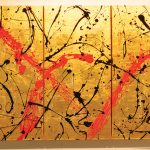
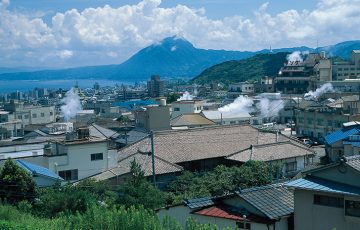

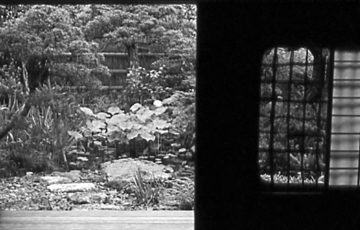
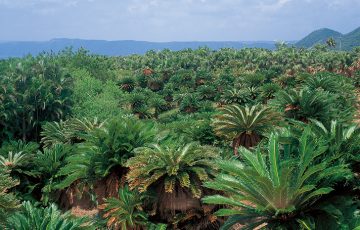

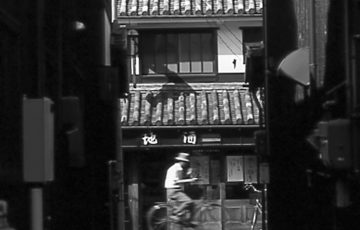
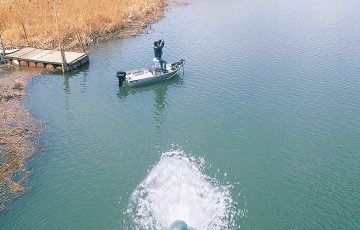
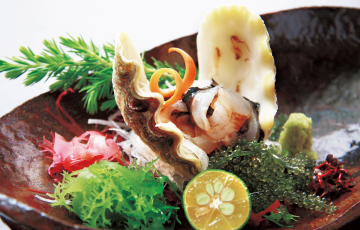


Recent Comments